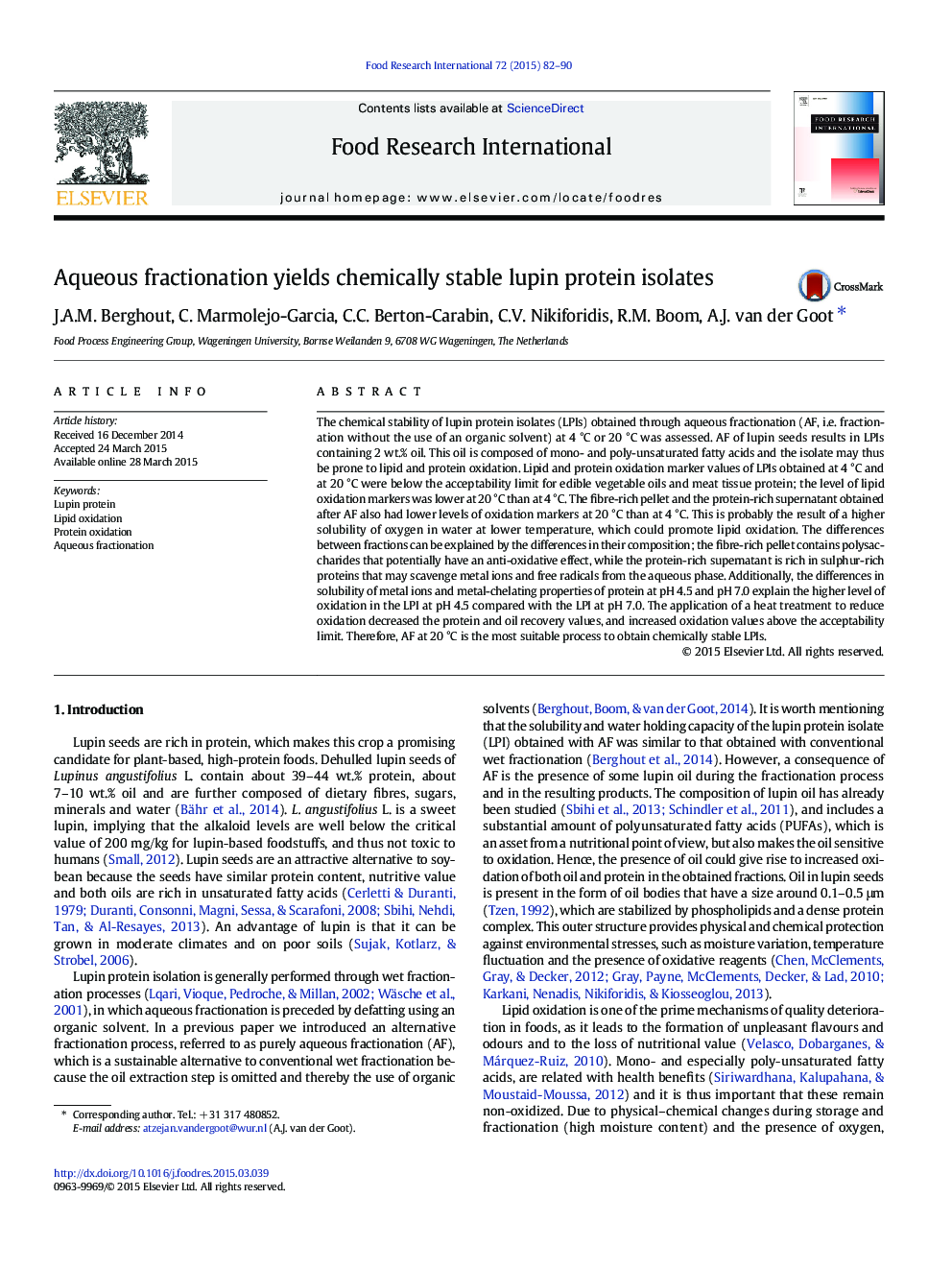| کد مقاله | کد نشریه | سال انتشار | مقاله انگلیسی | نسخه تمام متن |
|---|---|---|---|---|
| 4561464 | 1628474 | 2015 | 9 صفحه PDF | دانلود رایگان |
• Aqueous fractionation at 4 °C and 20 °C yielded fractions within the quality limits.
• Aqueous fractionation at 4 °C resulted in higher lipid oxidation values than at 20 °C.
• Protein and polysaccharides had protective effects against oxidation.
• A heat treatment increased lipid oxidation values above the acceptability limit.
The chemical stability of lupin protein isolates (LPIs) obtained through aqueous fractionation (AF, i.e. fractionation without the use of an organic solvent) at 4 °C or 20 °C was assessed. AF of lupin seeds results in LPIs containing 2 wt.% oil. This oil is composed of mono- and poly-unsaturated fatty acids and the isolate may thus be prone to lipid and protein oxidation. Lipid and protein oxidation marker values of LPIs obtained at 4 °C and at 20 °C were below the acceptability limit for edible vegetable oils and meat tissue protein; the level of lipid oxidation markers was lower at 20 °C than at 4 °C. The fibre-rich pellet and the protein-rich supernatant obtained after AF also had lower levels of oxidation markers at 20 °C than at 4 °C. This is probably the result of a higher solubility of oxygen in water at lower temperature, which could promote lipid oxidation. The differences between fractions can be explained by the differences in their composition; the fibre-rich pellet contains polysaccharides that potentially have an anti-oxidative effect, while the protein-rich supernatant is rich in sulphur-rich proteins that may scavenge metal ions and free radicals from the aqueous phase. Additionally, the differences in solubility of metal ions and metal-chelating properties of protein at pH 4.5 and pH 7.0 explain the higher level of oxidation in the LPI at pH 4.5 compared with the LPI at pH 7.0. The application of a heat treatment to reduce oxidation decreased the protein and oil recovery values, and increased oxidation values above the acceptability limit. Therefore, AF at 20 °C is the most suitable process to obtain chemically stable LPIs.
Journal: Food Research International - Volume 72, June 2015, Pages 82–90
